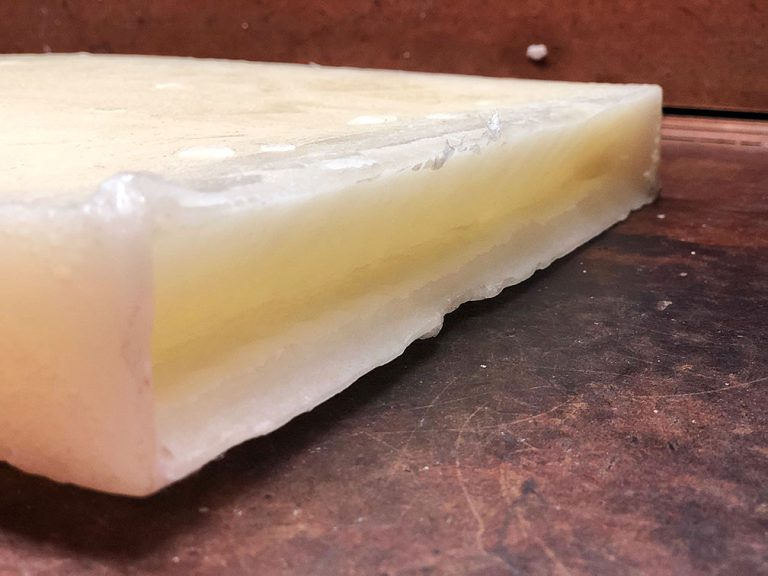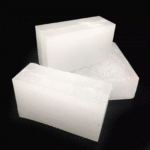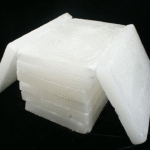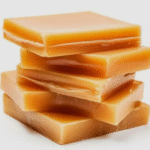What is Microcrystalline Wax?
Microcrystalline wax (MW) is a type of wax that is characterized by its small crystal structure, which gives it unique properties and advantages over other types of waxes. It is a byproduct of the petroleum refining process and is often used as a versatile material in various industries.
Unlike paraffin wax, which has larger, more defined crystals, microcrystalline wax consists of small, tightly packed crystals. This microstructure gives it a smoother texture, increased flexibility, and improved resistance to moisture and temperature fluctuations.
Key Properties of Microcrystalline Wax
-
Fine, dense crystal structure
-
Higher melting point (65°C–90°C)
-
Excellent adhesive qualities
-
Strong moisture and gas barrier
-
Flexible and durable under stress
-
Retains oil and resists cracking
Benefits of MW
-
Enhances product durability and flexibility
-
Protects against moisture, oxygen, and contaminants
-
Improves the texture and consistency of cosmetics
-
Strengthens adhesives for industrial use
-
Eco-friendly options available for food-grade applications
Applications of MW
Cosmetics Industry:
-
Used in lipsticks, lip balms, creams, and lotions to add structure and moisturizing properties.
Food Preservation:
-
Coating for cheeses and candies to protect against spoilage and dehydration.
Packaging Industry:
-
Moisture-resistant coatings for cardboard, paper, and flexible packaging materials.
Adhesives:
-
Key ingredient in hot-melt adhesives and sealants.
Rubber and Automotive Industry:
-
Enhances durability and ozone resistance in rubber tires and automotive components.
Protective Coatings:
-
Used on metals and industrial surfaces to prevent rust and corrosion.
Microcrystalline wax also has a relatively low melting point, typically ranging from 63 to 93 degrees Celsius (145 to 200 degrees Fahrenheit). This low melting point allows it to be easily melted and incorporated into various formulations, such as cosmetics, pharmaceuticals, and personal care products.
In the cosmetics industry, microcrystalline wax is used in the production of lipsticks, balms, creams, and lotions. Its smooth texture and emollient properties help enhance the spread ability and moisturizing capabilities of these products.
Furthermore, MW is widely utilized in the packaging industry as a coating material. It provides a protective layer that improves the moisture resistance, durability, and glossiness of various packaging materials, including paper, cardboard, and corrugated boxes.
MW is also valued for its electrical insulating properties. It is used in the manufacturing of electrical cables and wires to provide insulation and protection against moisture and external elements.
Additionally, microcrystalline wax finds applications in the rubber, tire, and textile industries. It can be used as a processing aid in rubber compounding, a release agent in tire manufacturing, and a lubricant in the textile industry.
One of the key features of microcrystalline wax is its excellent adhesive properties. It has a higher tackiness and adhesive strength compared to other waxes, making it suitable for applications where strong adhesion is required. It is commonly used as an adhesive or binder in the production of coatings, adhesives, and sealants.
Given its unique characteristics, microcrystalline wax is a versatile material that offers a wide range of applications. Its small crystal structure, adhesive properties, low melting point, and resistance to moisture make it a preferred choice in industries where these properties are essential.
Summary
Microcrystalline Wax is a type of wax characterized by its small crystal structure. It is known for its adhesive properties, low melting point, and resistance to moisture. It finds applications in industries such as coatings, adhesives, sealants, cosmetics, packaging, electrical insulation, rubber, tires, and textiles. The versatility and unique properties of MW make it a valuable material in various manufacturing processes and formulations.
Whether you’re manufacturing beauty products, packaging food, or producing industrial adhesives, MW is an essential ingredient offering strength, flexibility, and protection. Understanding its unique properties helps businesses across sectors optimize their products and ensure lasting performance.
Discover what microcrystalline wax is, its key properties, benefits, and why it’s essential in industries like cosmetics, food preservation, packaging, adhesives, and rubber manufacturing.
-
Microcrystalline Wax Uses
-
Uses of Microcrystalline Wax
-
Industrial Applications of Microcrystalline Wax
-
Microcrystalline Wax Benefits and Uses
-
How Microcrystalline Wax is Used
-
Microcrystalline Wax for Cosmetics and Industry
Contact Pars Universal Bitumen-Ltd
For more information or to place an order, please contact Pars Universal Bitumen-Ltd sales team @ Contact Us.
Our Expert will be in touch with you to guide you about the Use of MW, that can be produced according to your project requirements. Please Get in touch with us for discussing your project details. Pars Universal Bitumen-Ltd As Your Microcrystalline Wax Supplier





